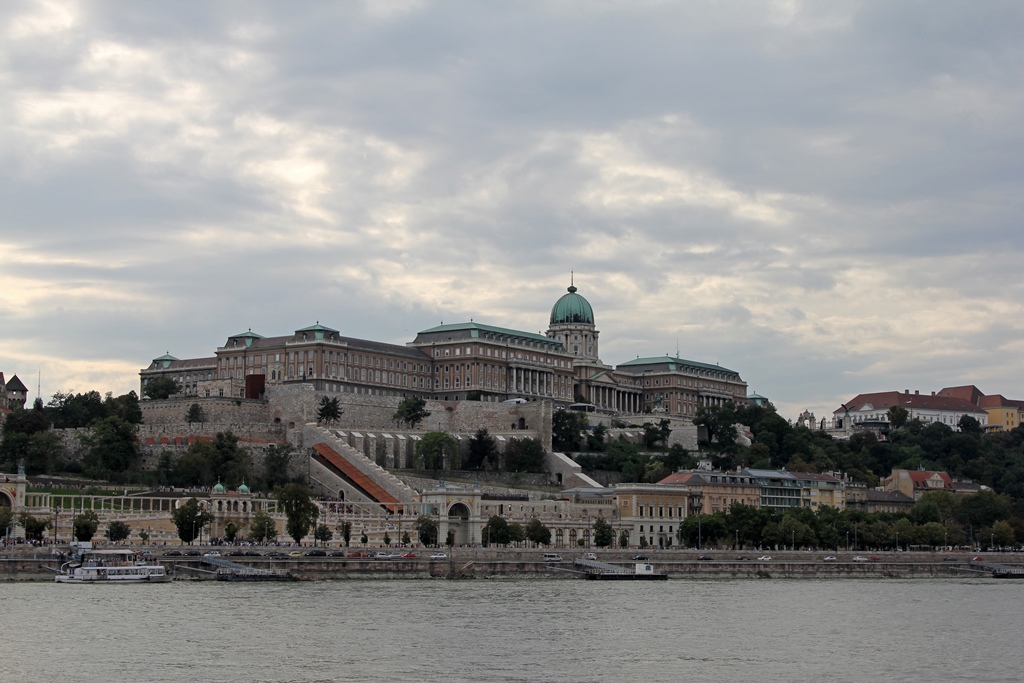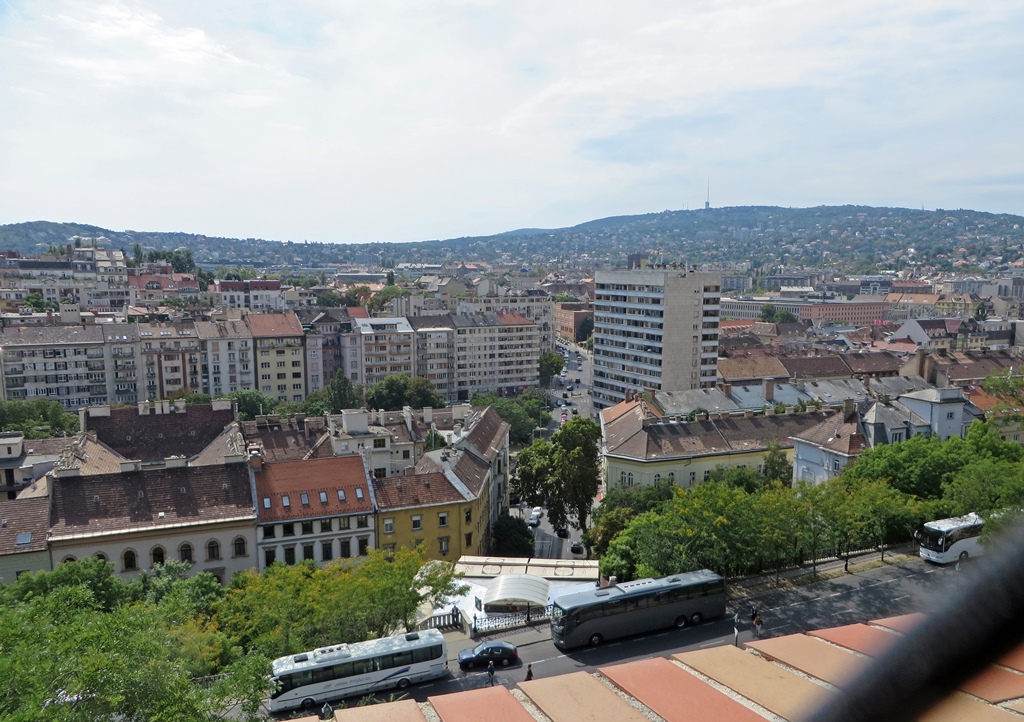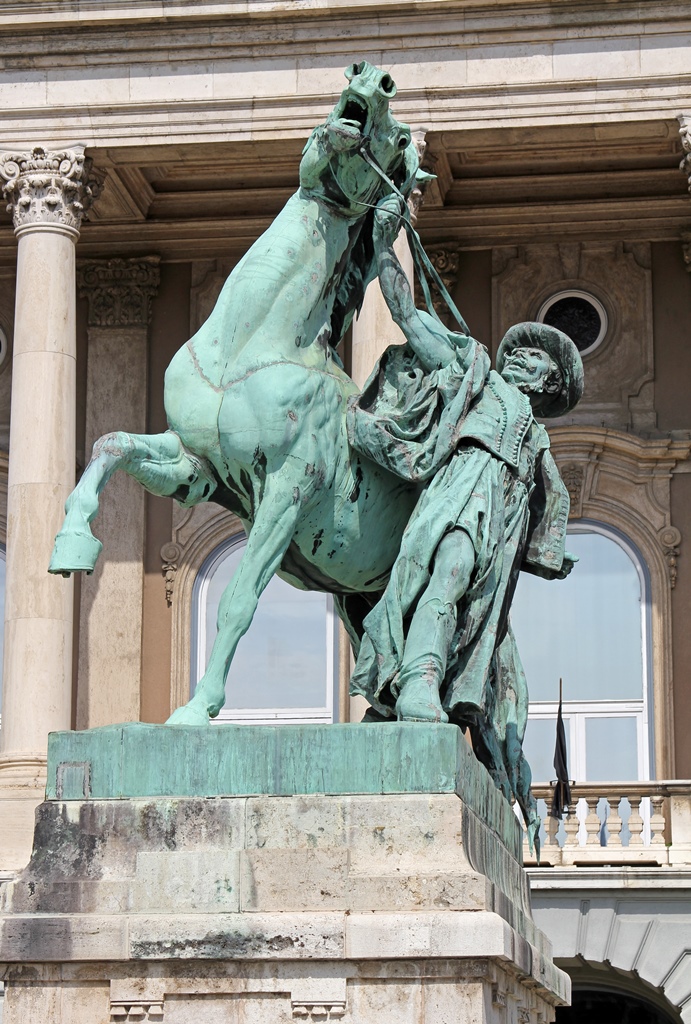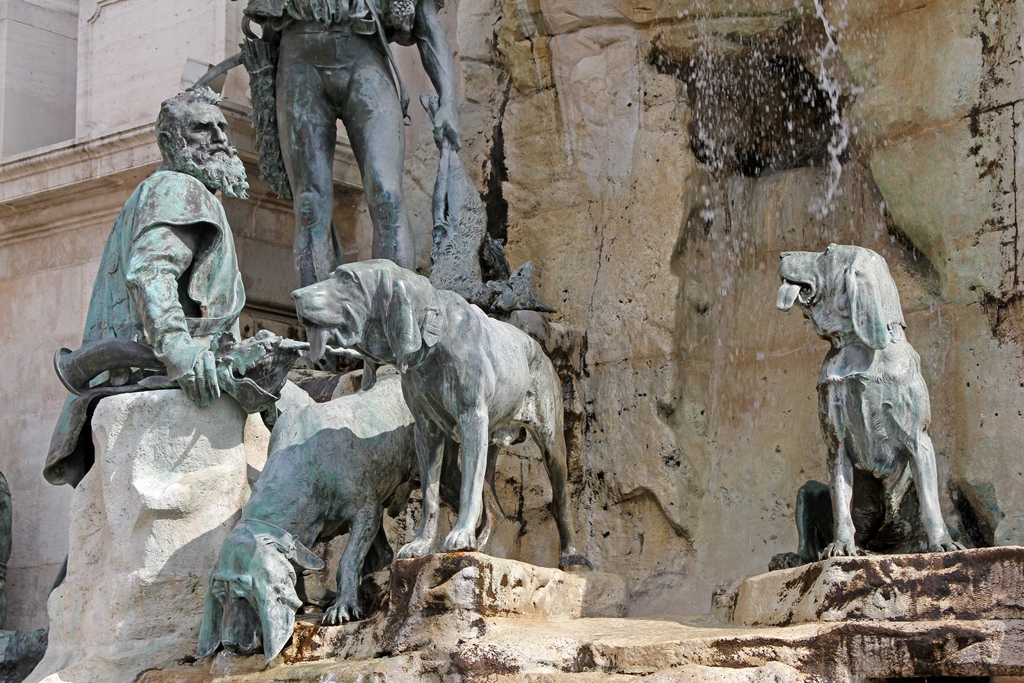Note: A YouTube companion video for this page can be found
here.
Buda Castle
The principal intention for our next day in Budapest was to cross the Danube, climb the
hill on the other side and explore the palace complex strewn across the top of it. The
palace has suffered many travails over the centuries, and some of this will be
discussed below, but before visiting the palace there were some other places we wanted
to visit first.
First we wanted to go to the market. Or the Great Market Hall, to be precise. The
Great Market Hall, with the catchy Hungarian name Nagyvásárcsarnok, was built in
1897 and encloses 10,000 square meters (or about 107,000 square feet) of space. There
are two levels of vendors contained in the open configuration (apparently there is also
a basement, which escaped our notice), with the lower level selling food and the upper
level mostly selling merchandise.
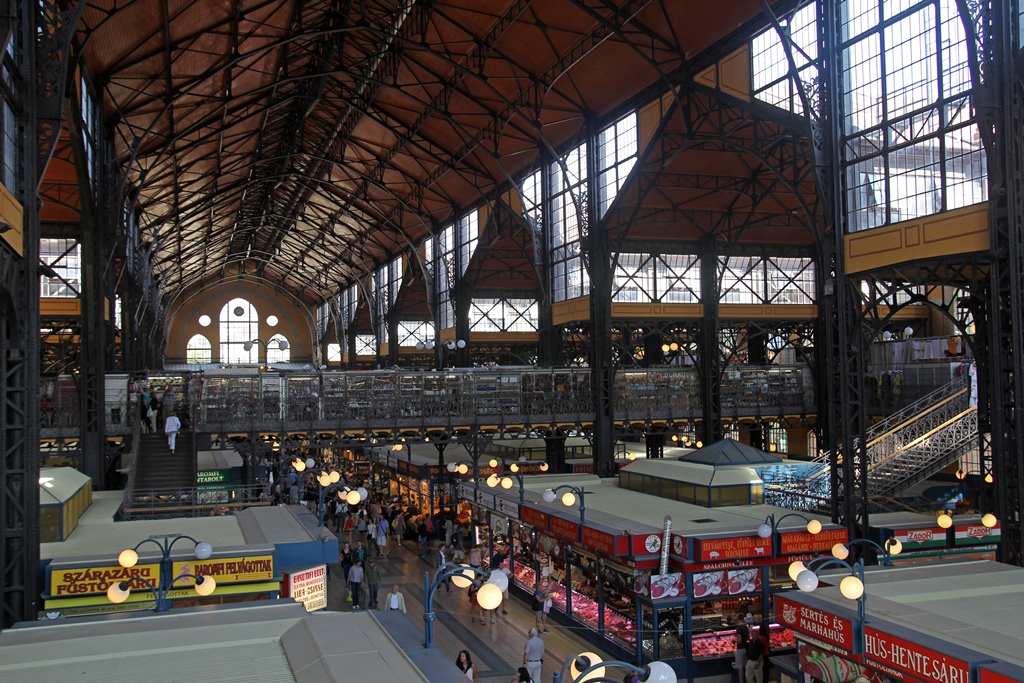
Great Market Hall
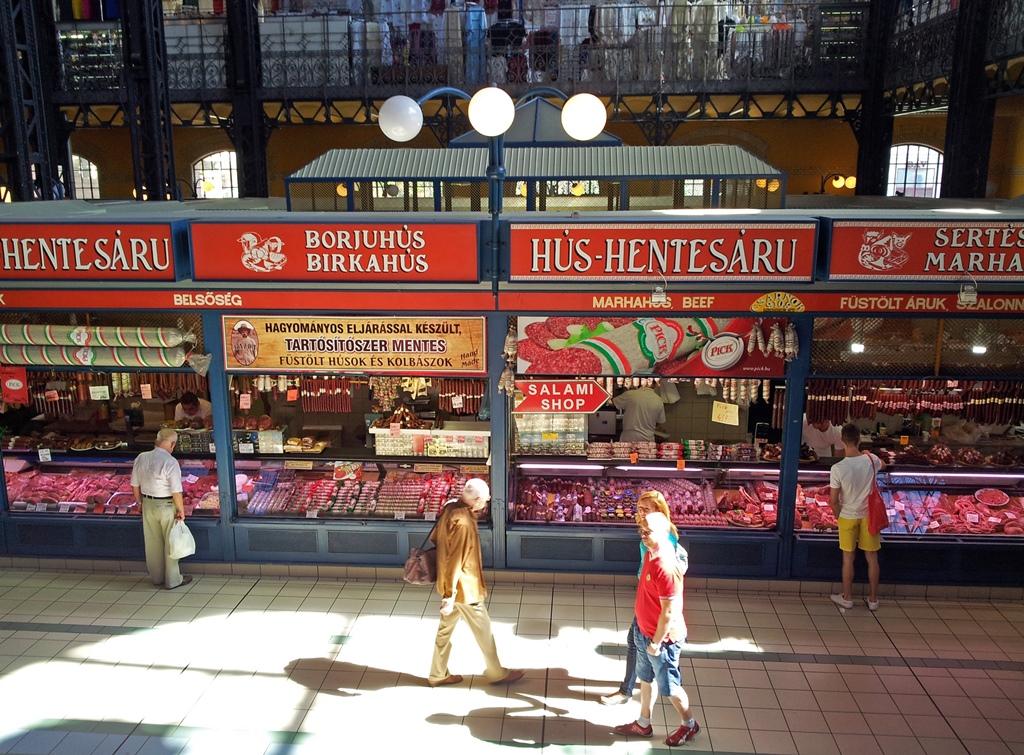
Sausage/Meat Vendor
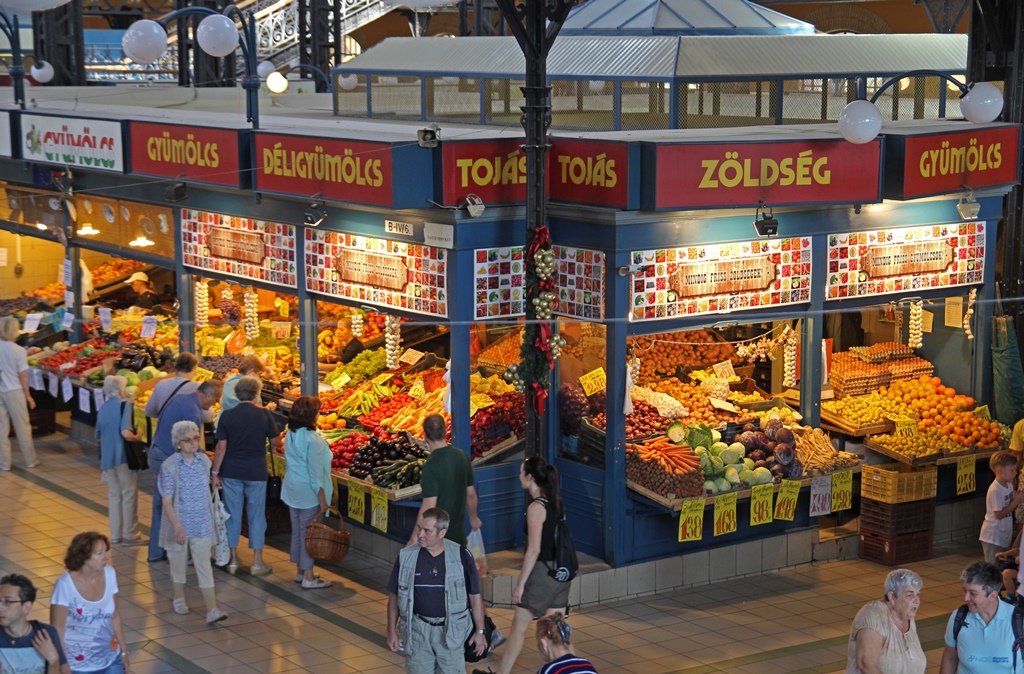
Produce Vendor
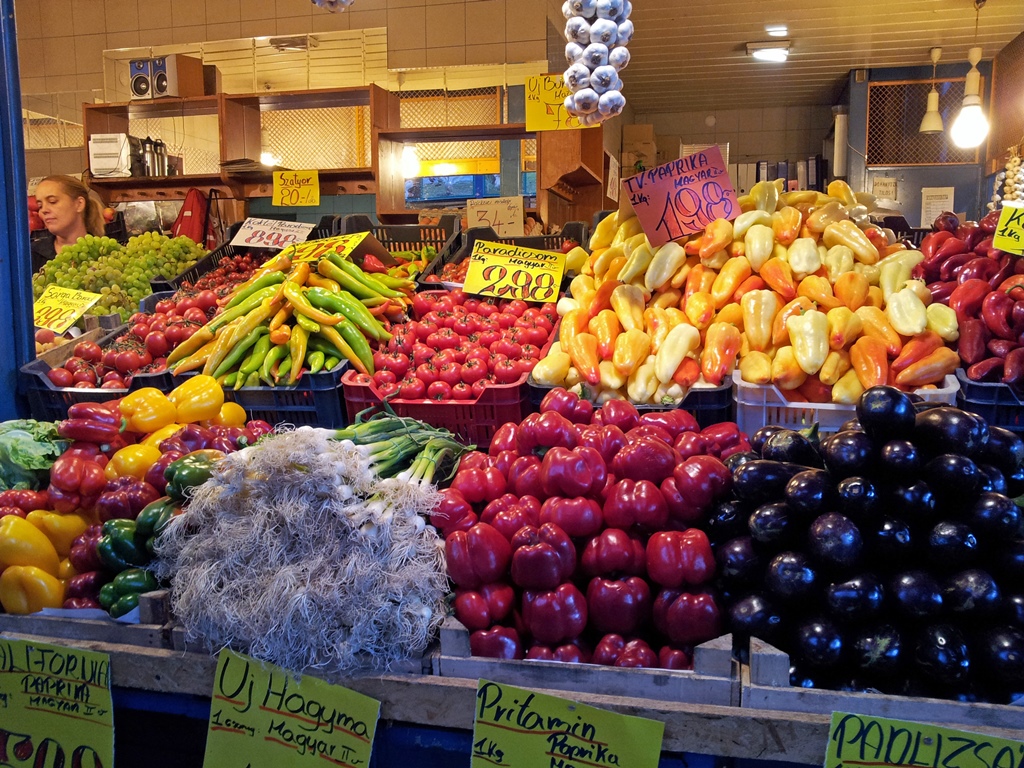
Peppers and Eggplant
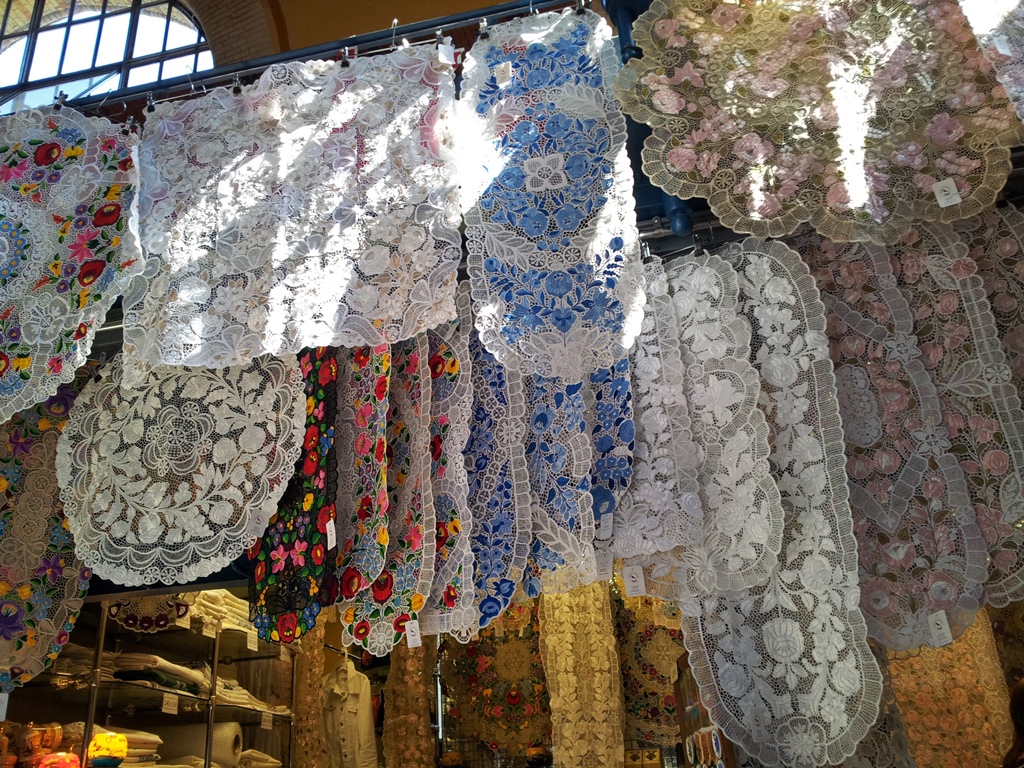
Lace Vendor
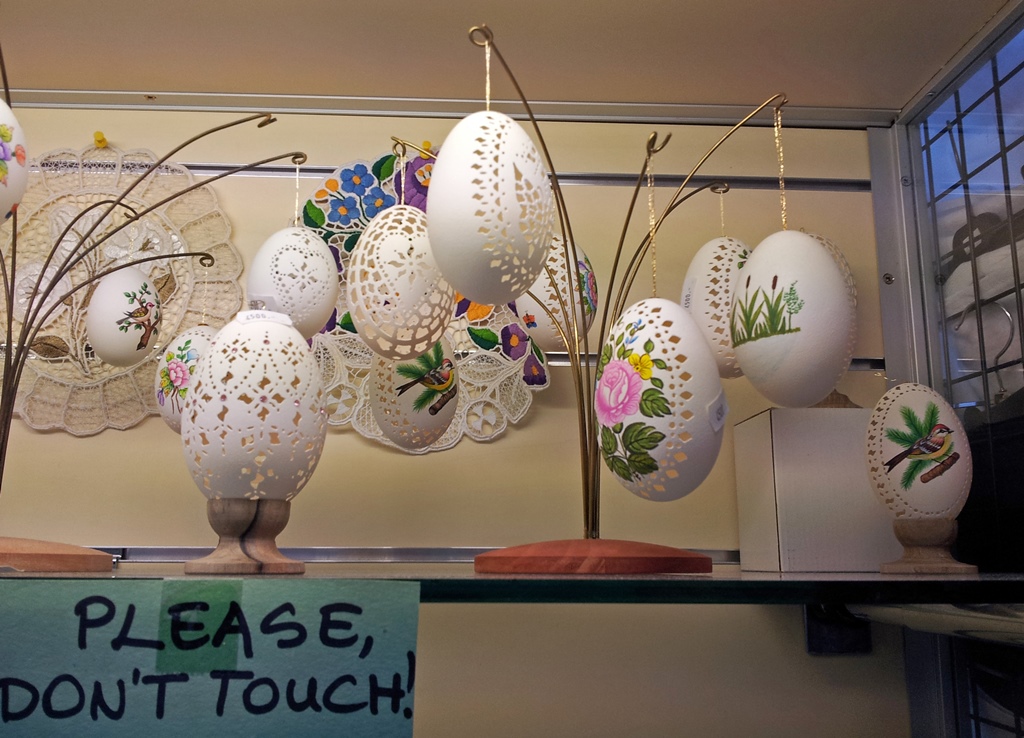
Carved/Painted Eggs
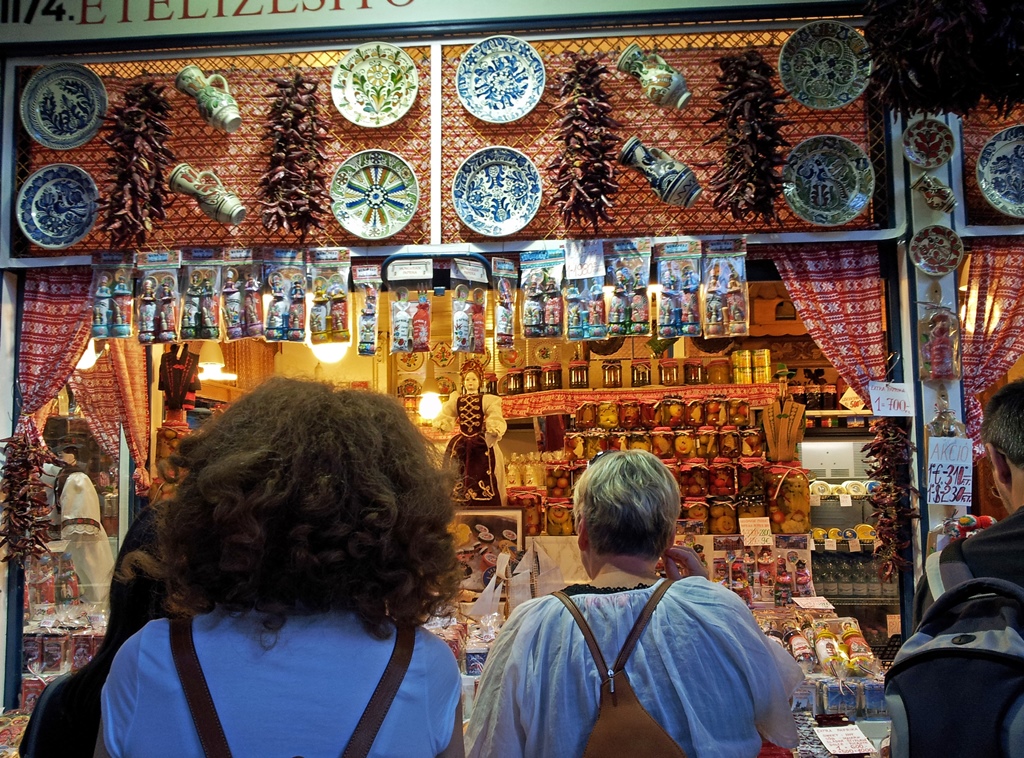
China and Peppers (Some Pickled)
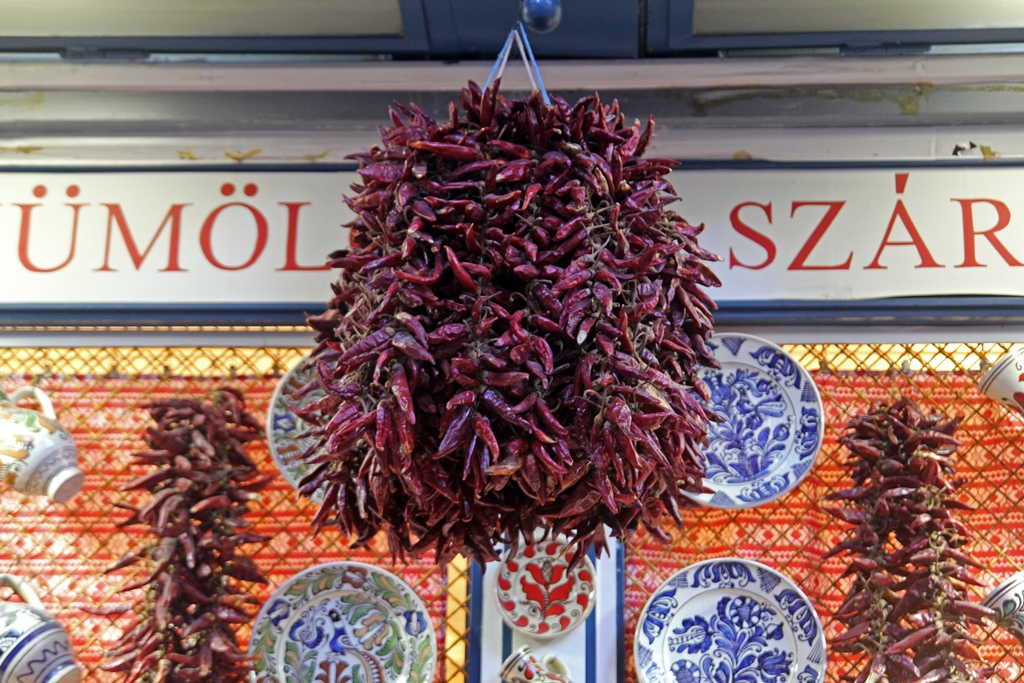
Bundle of Dried Peppers
Somehow we managed not to buy anything, mostly because we didn't want to be
carrying stuff around all day. There are some fast food places on the upper level,
so the hall is probably a nice place to have lunch. But we'd just had breakfast,
so we weren't hungry.
From the Great Market Hall we found a bus that took us across the river (via the
Liberty Bridge, I think), upstream and then up a winding road to the top of Castle
Hill. We were deposited in a central location, from which it was a short walk to
the left to reach the palace. But we didn't go that way, opting instead for the
rightward direction, as we wanted to first visit the newly-restored Matthias Church.
On the way we passed a junky-looking old car with a note attached to it. The note
solicited (in English) donations for maintenance of the car, which turned out to be
a Soviet-era Trabant 601 Combi.
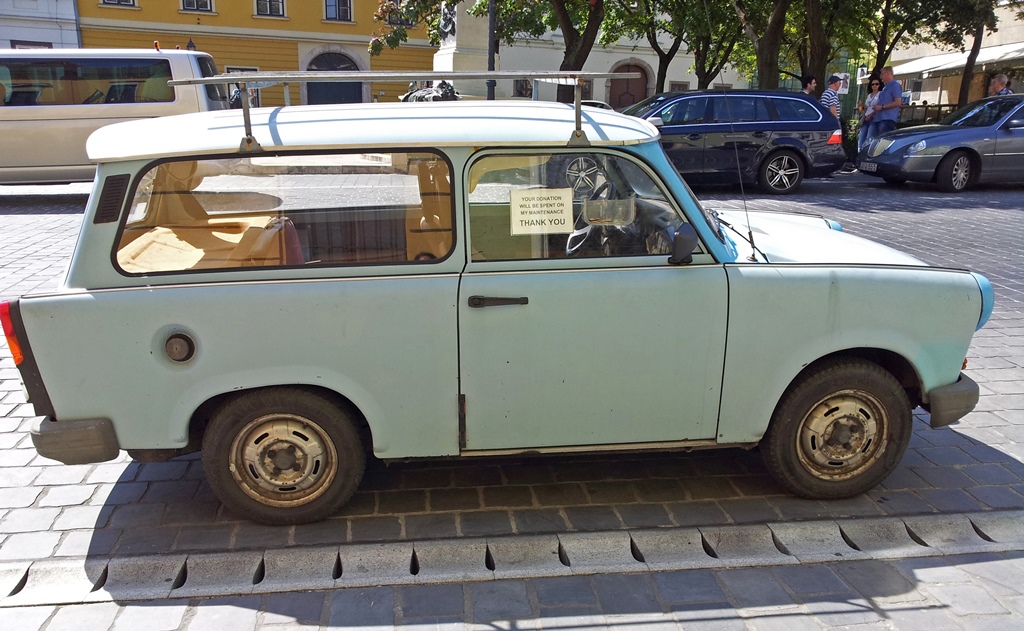
Trabant 601 Combi
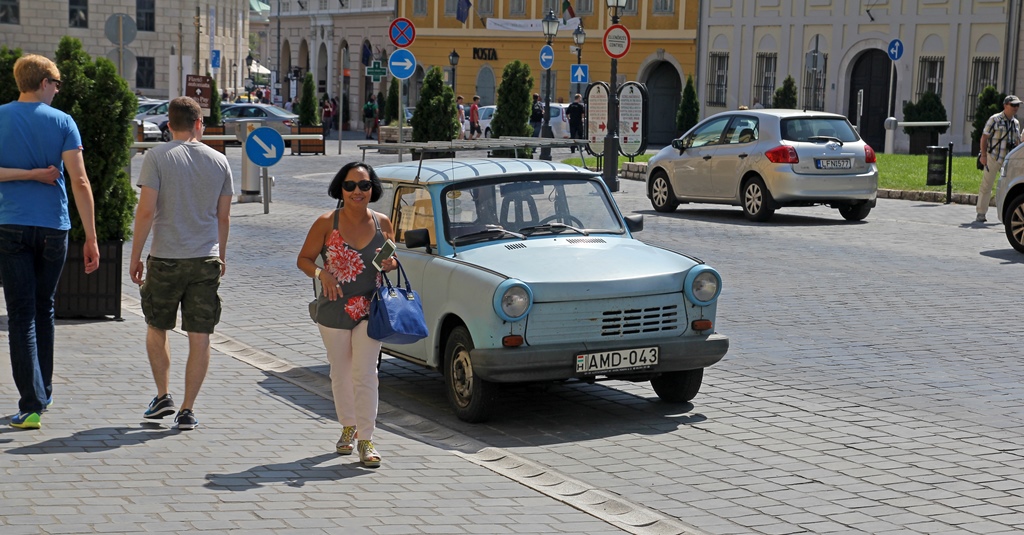
Nella and Trabant 601
During the bad old days of the Warsaw Pact, Hungarian roads were dominated by Trabants
more than the roads of any other country, even though the cars were manufactured in
East Germany (East Germany also had a second make of car, called the Wartburg, which was
not available in Hungary). The Communist government dictated constraints on the cars,
which would supply basic transportation to their owners, and not much else. Trabants
came with two-stroke, 26-horsepower engines that belched (and continue to belch) smelly
blue smoke. Fortunately they were light enough that not much power was needed to make
them go. Their door panels were made from Duroplast, a compressed mixture of resin and
polyester which was light, easy to produce, cheap, rust-proof, non-biodegradable and
utterly useless as any kind of barrier in the event of a collision. But none of these
shortcomings keep Trabants from being viewed nostalgically by the populace. Attempts by
the government to get them off the road by offering free public transport to people who
turn them in have been mostly unsuccessful. People would miss their Trabis.
Continuing past the Trabant (northward), we came upon a large monument, which turned out
to be the Holy Trinity Statue. A statue was built on this spot in 1706 to commemorate
residents of Buda who had perished in a 1691 plague outbreak. But then there was
another plague outbreak in 1709, so the statue was removed and replaced by a larger one,
which is the one seen today. Apparently it works better, as the plague has not returned.
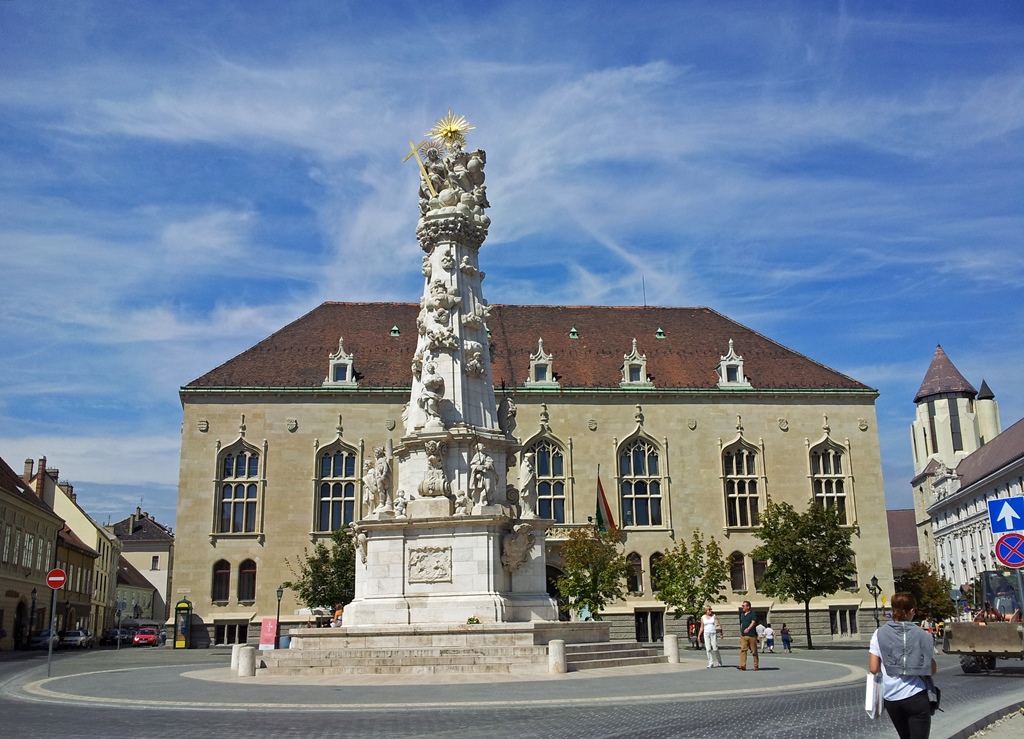
Holy Trinity Statue (1709)
Next to the Holy Trinity Statue was the Matthias Church, named for the 15th Century
Hungarian king Matthias Corvinus. We tried to buy tickets for the church but found that
it was closed. Instead we went looking for a restaurant and found ourselves lunch,
resolving to return to the Matthias Church on another day.
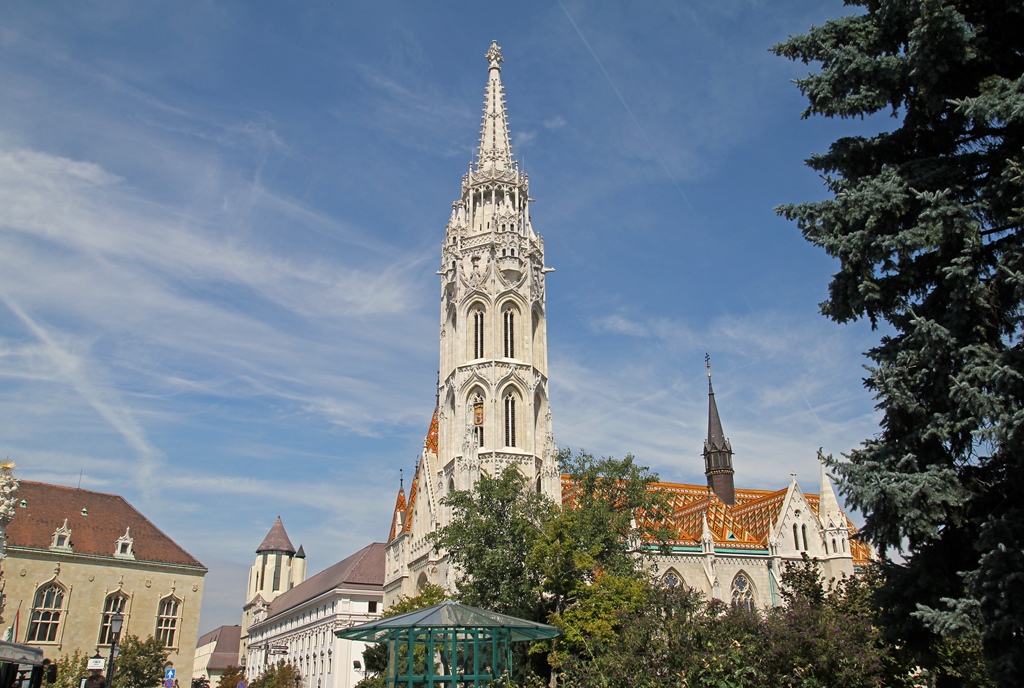
Matthias Church
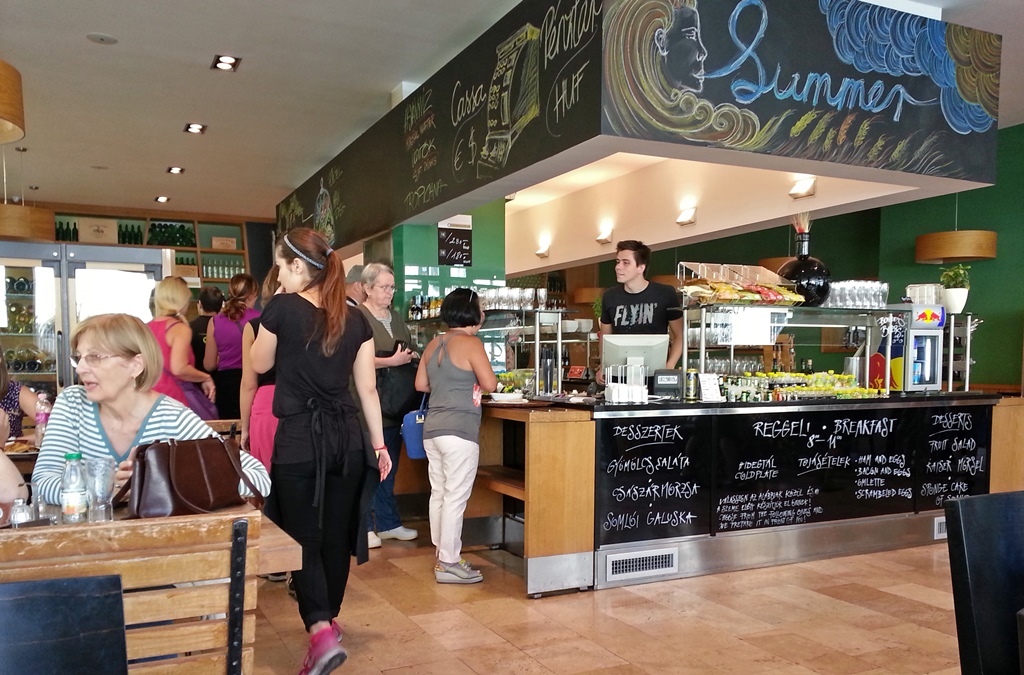
Nella at Lunch
From the restaurant we headed south, toward the palace. On the way we came to a
viewpoint from which we could answer any questions we might have had about what there
was behind Castle Hill. The answer was "more Budapest".
West of Castle Hill
There has been a castle or palace on top of Castle Hill since 1265, but between
updates and rebuilds and periods of decay, it's been at its best for a very small
fraction of that time. A Gothic palace was built in the 14th Century, to be followed
by a Renaissance palace which was completed in the early 16th Century. Shortly after
its completion, the Renaissance palace (along with all of Buda) was captured by the Ottoman
Turks, who neglected it horribly, using it as a barracks and a stable. In 1686, Buda
was captured by the Habsburgs, with heavy damage to the palace remnants occurring during
an artillery bombardment. The Habsburgs demolished everything and started over, beginning
work on a Baroque palace in 1715. Construction was sporadic due to lack of resources, but
help eventually arrived from Queen Maria Theresa, who had been supported by the Hungarians
during the War of the Austrian Succession between 1740 and 1748. The palace rebuild was
completed in 1769, and Maria Theresa promptly turned part of it into a nunnery for the
Sisters of Loreto, as she had no intention of actually living there. All of the fancy
décor turned out to be inappropriate for a nunnery, so the sisters moved out and the palace
was adapted for use as a university, which opened in 1780. The university idea didn't work
out either, and the university moved across the river to Pest in 1783. In 1791 the palace
became a palatinal palace, used as a residence for the chief Habsburg representative in
Hungary. In 1848 there was a falling-out between Hungary and Austria and the palace was
vacated again, being damaged in an 1849 artillery assault. After Hungary and Austria were
reconciled, the damage was repaired, with the palace becoming more neo-classical in the
process.
After some decades of prosperity, a number of urban renewal projects were undertaken in
Budapest, including a renovation of the palace. During this time, the palace was expanded
and lavishly decorated, with a baroque dome being added. The project was completed in 1912.
Unlike the Habsburg dynasty, the palace weathered World War I well, but it was not as
fortunate during World War II. The Nazis took over the Hungarian government in the fall of
1944 and used the palace to stage their last stand against the approaching Soviet Red Army.
This didn't work out well for either the Nazis or the palace, as the Nazis were forced to
surrender in February of 1945 and the palace was pretty much reduced to a ruin by artillery
fire. After the war, the palace was mostly rebuilt during the 1950's and 1960's, but in a
less ornate style, reflecting the architectural trends of the time (and probably saving
money). The exteriors were done by 1966, but work continued on the interiors into the
1980's. The palace is now home to the National Gallery, the Budapest History Museum and
the Hungarian National Library.
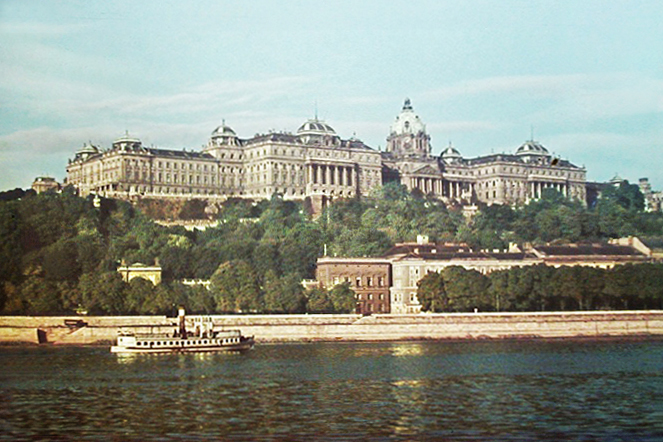
Palace in 1930's
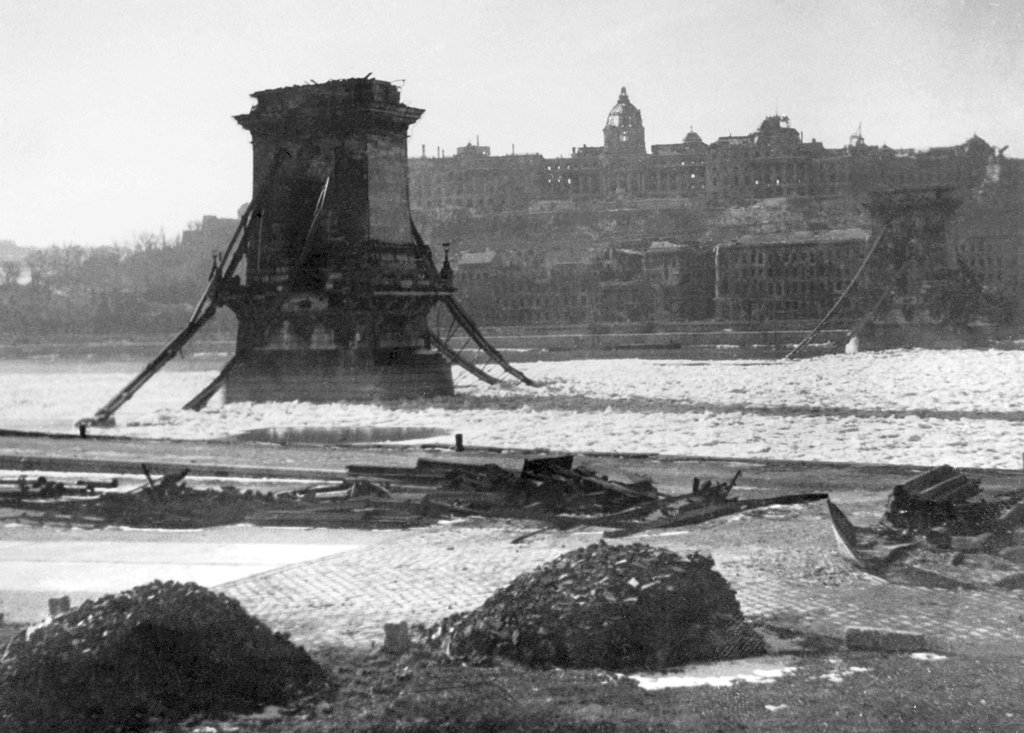
Chain Bridge and Palace in Ruins (1946)
As we approached the palace, the first wing we encountered was part of the National
Gallery, with a bronze statue of a horse wrangler in front of it.
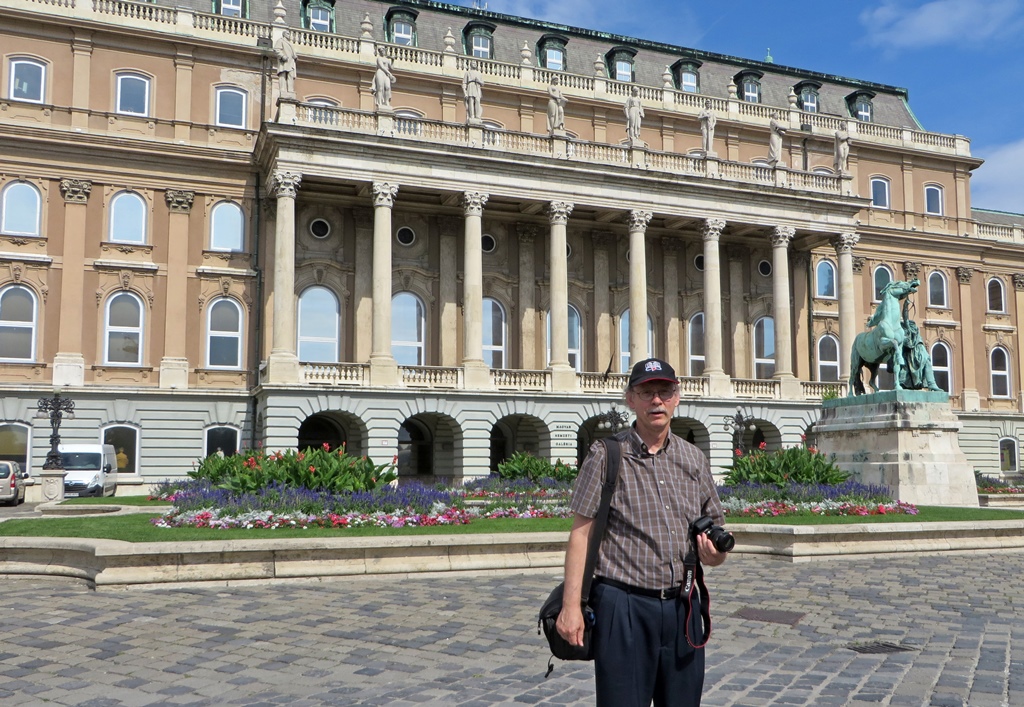
Bob and Hungarian National Gallery
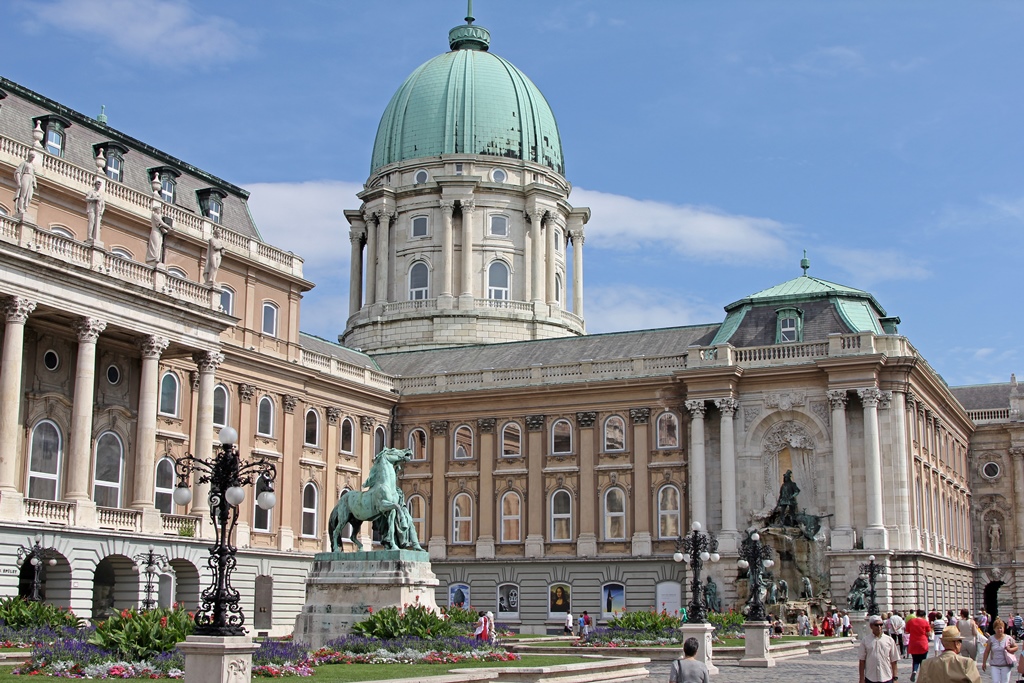
Royal Palace
Statue of Horse Wrangler, by György Vastagh
Against one of the walls near the National Gallery was a 1904 creation called
the Matthias Fountain, which depicts a hunting party of king Matthias Corvinus.
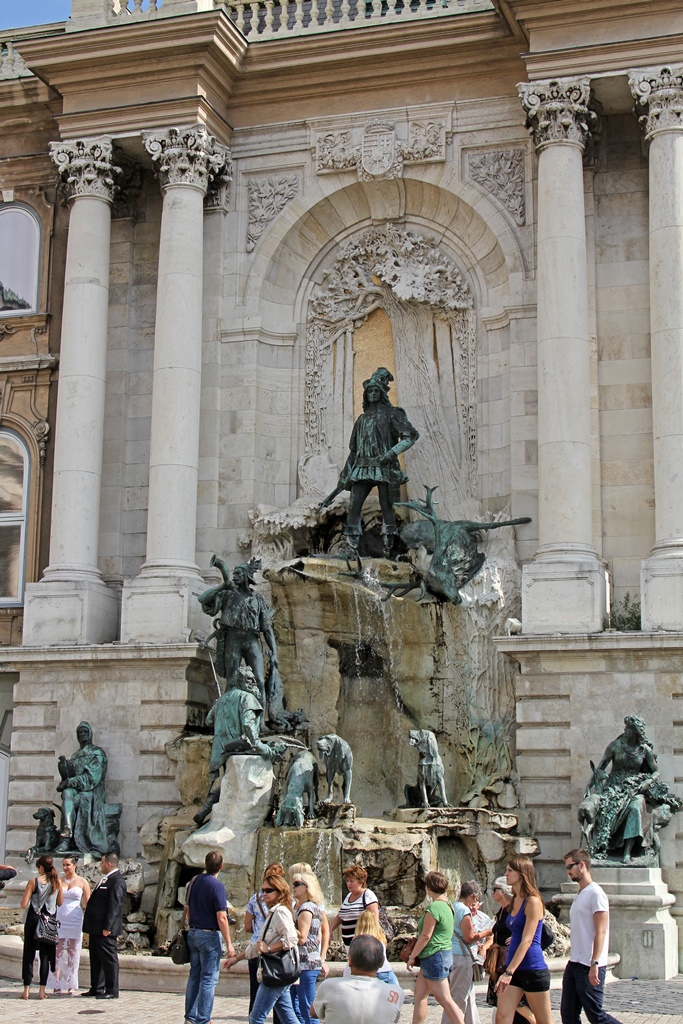
Matthias Fountain, Alajos Stróbl (1904)
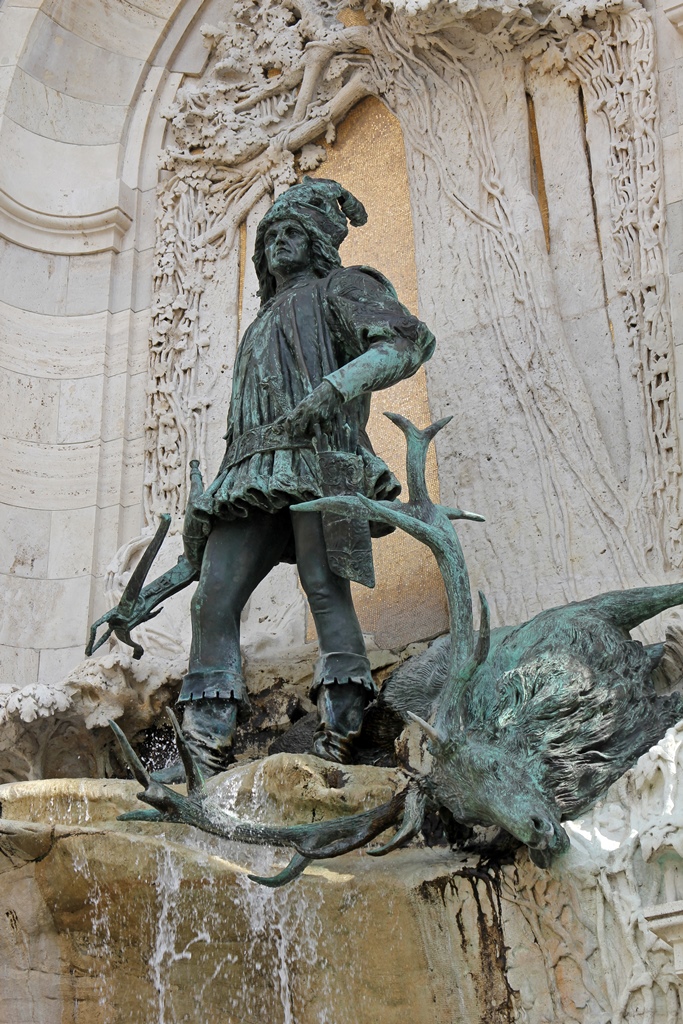
King Matthias and Slain Stag
Hounds and Leader of Hunting Group
Ahead of us was an archway leading into a courtyard. The archway is called the Lions'
Gate, after the stone lions which guard it on both the inside and outside. The
courtyard is called the Lions' Courtyard, and has entrances to the palace's museums.
The courtyard is prominently featured in the climactic scene of Katy Perry's
Fireworks video.
Outside the entrance to the History Museum are elaborate bronze figures.
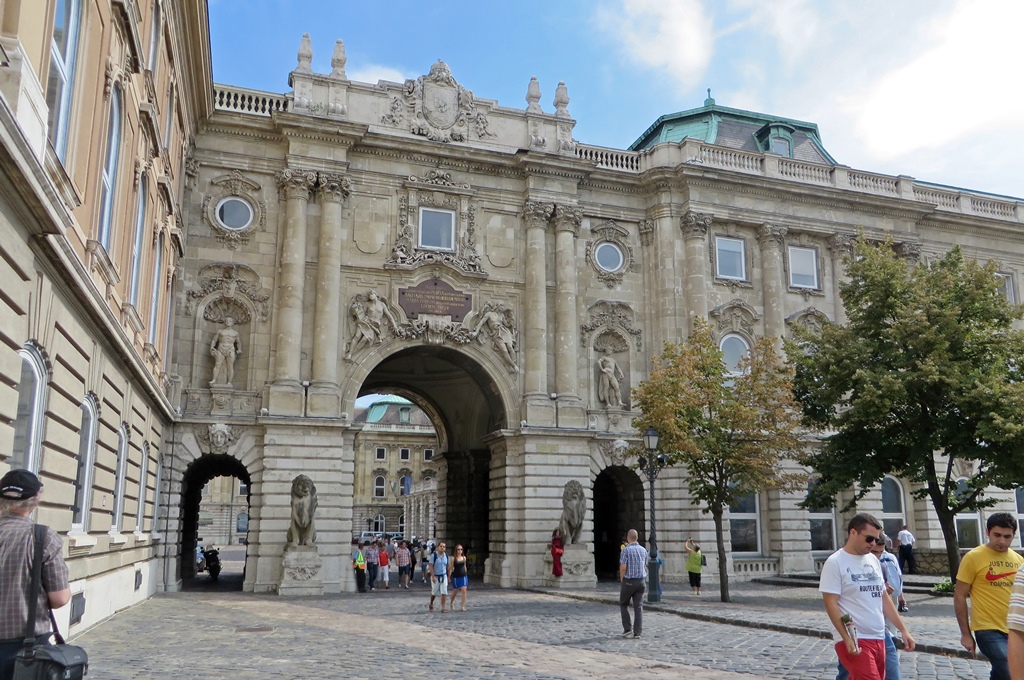
Lions' Gate
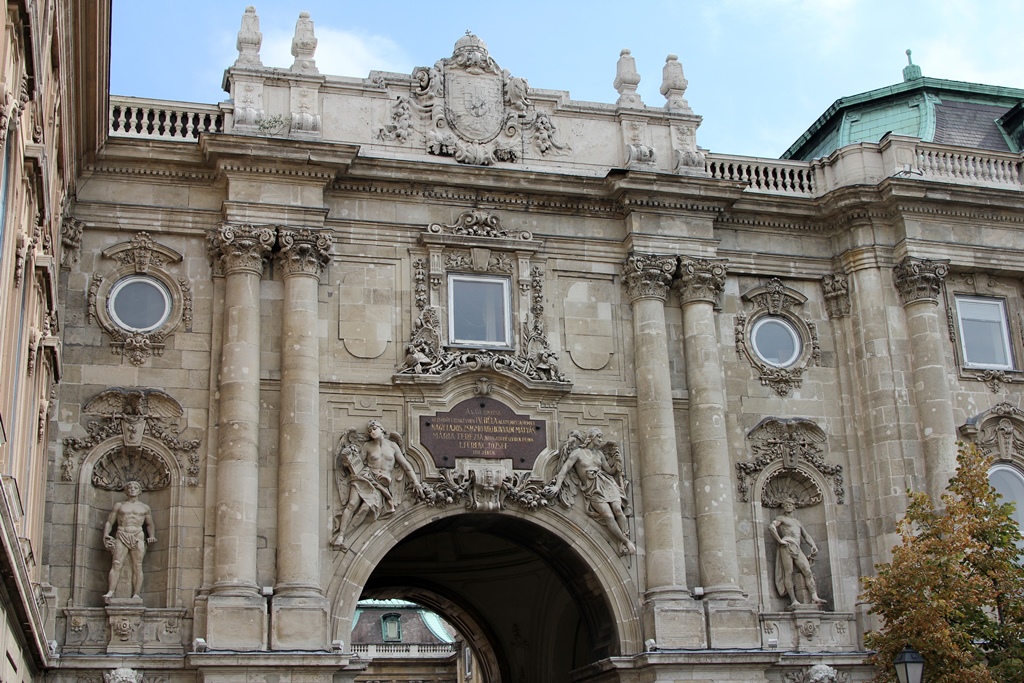
Lions' Gate
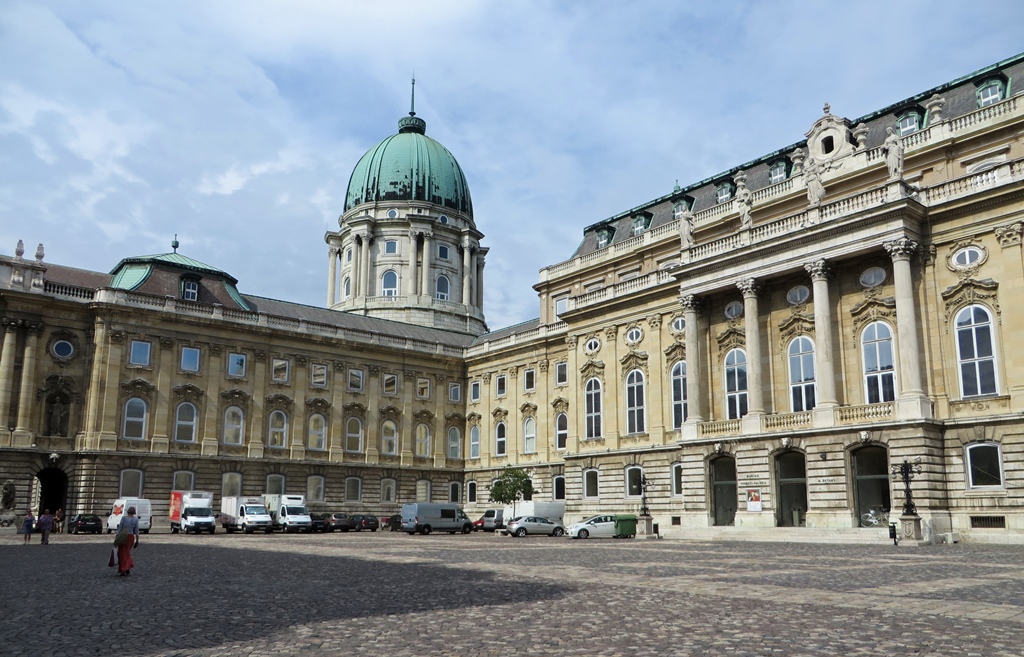
Lions' Courtyard
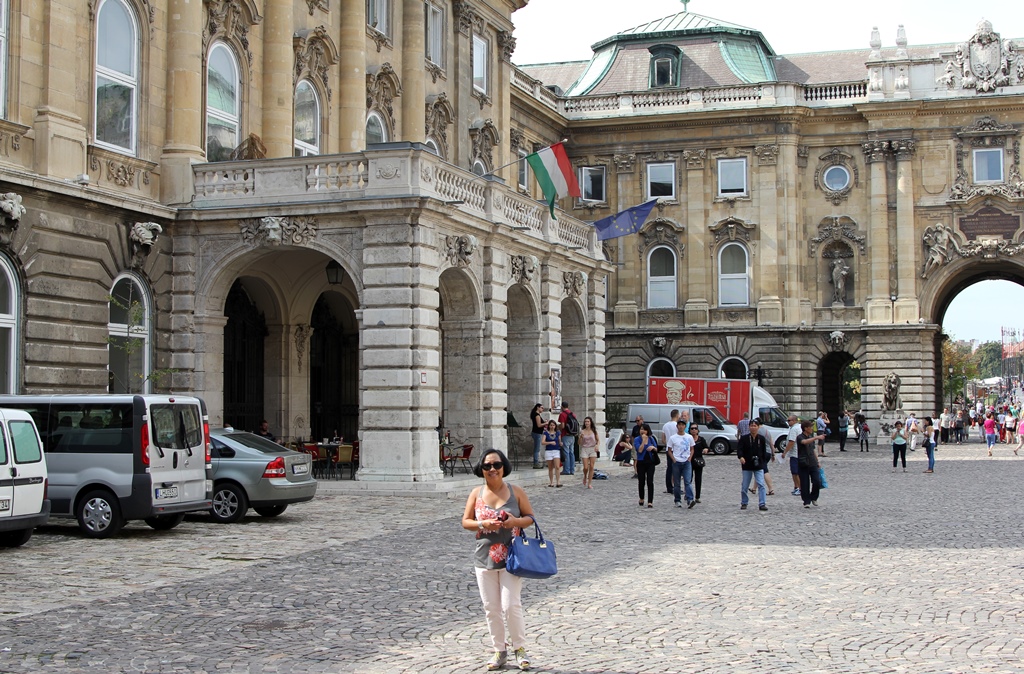
Nella in Lions' Courtyard
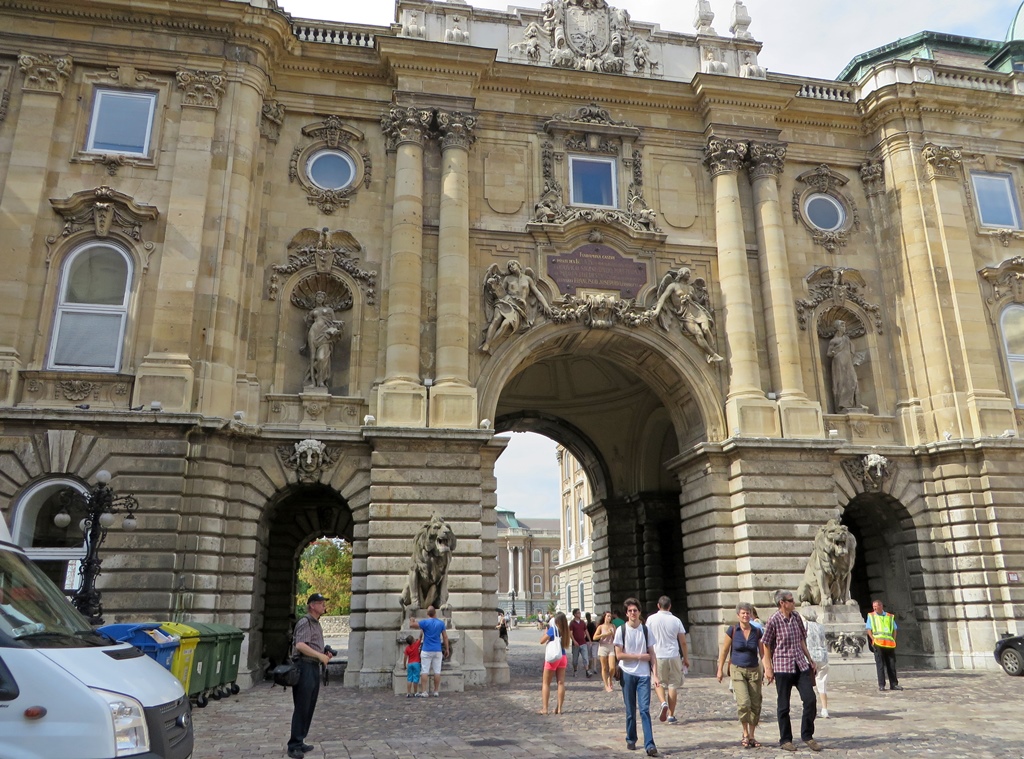
Inside of Lions' Gate
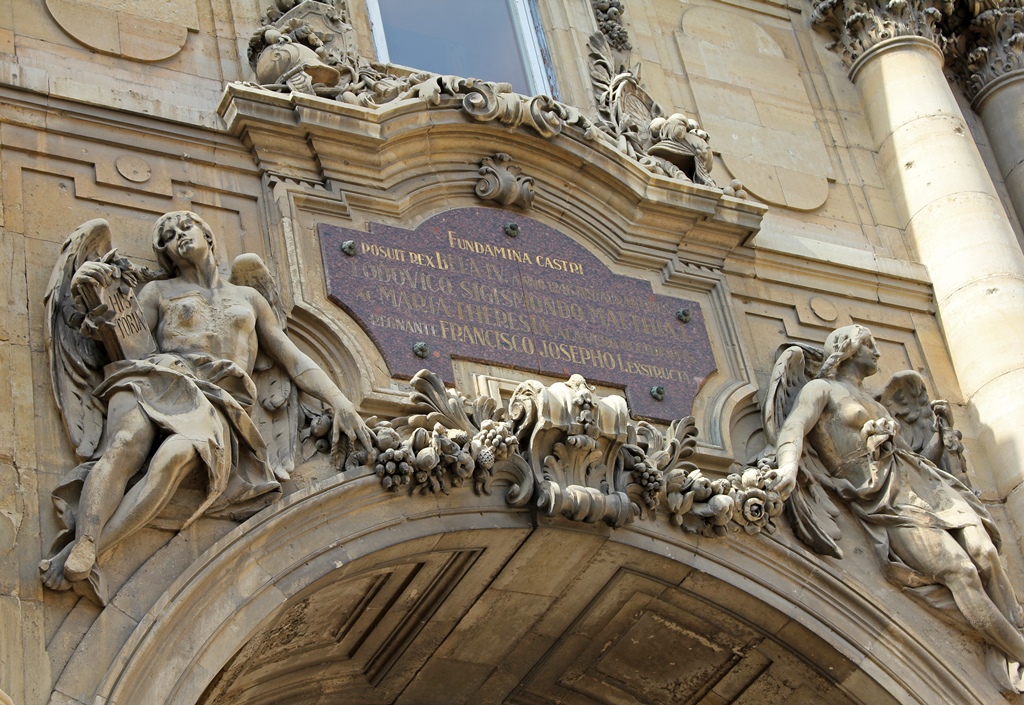
Lions' Gate Detail
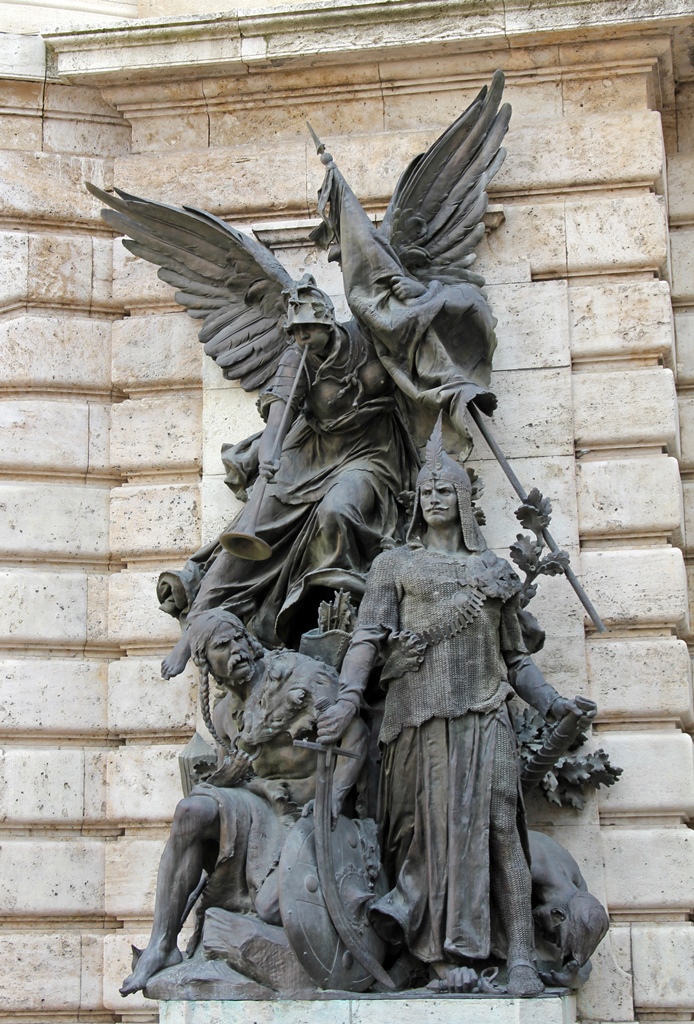
Bronze Figures at History Museum
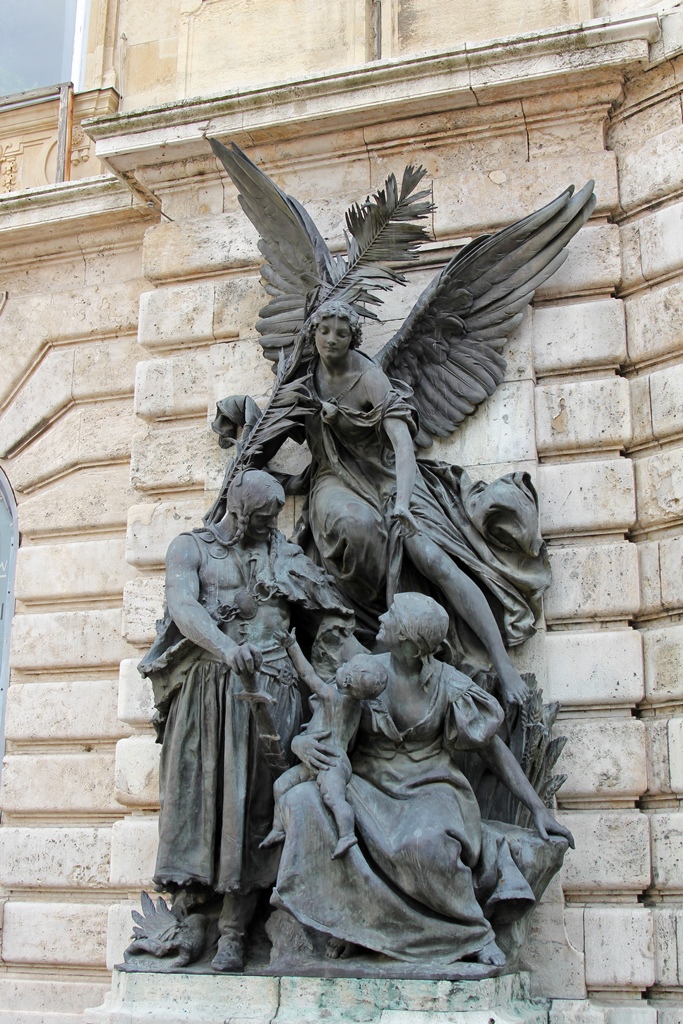
More Bronze Figures
We weren't feeling ambitious enough to visit any of the museums (maybe next
time), but we'd been eying the tour boats which float up and down the Danube,
and we decided to look into joining one of these expeditions.

